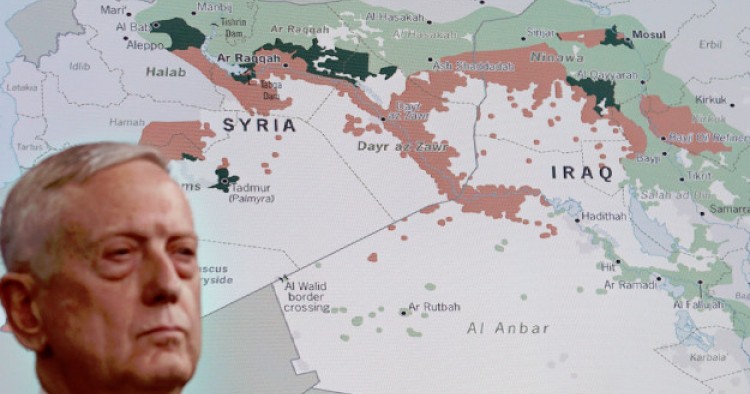Iran and its allied militia forces will continue to defy American threats, establish control over regions along Iraqi-Syrian border, foil “plots” by the U.S. military and its allies, and pursue their strategic objectives in Syria, says Fars News Agency (F.N.A.), which is affiliated with the Islamic Revolution Guards Corps (I.R.G.C.). “America perhaps aims to control the northeastern region through the Kurds and connect it to the southeast. Therefore, it has increased its activity in al-Tanf and has set up military bases in several locations in the area,” F.N.A. added. The lengthy analysis piece praised Iran-led “resistance forces” for having managed to reach the Iraqi border, defying American threats and crossing the “red line” set by the U.S. and its allies. The article further argued that the U.S. military would refrain from engaging in a direct confrontation with the Iran-allied forces in Syria and instead would empower Syrian rebel forces to undermine the Syrian government and its foreign allies.
“Despite U.S. warning, the current assessment is that American forces will not take action against the resistance” it opined. “They know that a direct action will lead to a direct confrontation. Then, there is no guarantee that the American military base in al-Tanf will not be targeted by a few ground-to-ground missiles of the Syria Army and its allies,” it warned. The article also pointed out that President Donald Trump said in Riyadh last month that Washington would not fight others’ wars and instead would help its allies to do the job.
The F.N.A. analysis further highlighted that Iran pursues three key objectives in Syria: to eliminate the Islamic State in border regions between Syria and Iraq; to foil America’s “plot” of dividing eastern Syria; and to establish a military corridor from Iran to the Mediterranean.
The piece refuted reports that Iran-backed militia forces in Syria and Iraq have linked up along the shared borders of the two countries. “Syrian and resistance forces have reached the Iraqi border in southeastern Homs. But on the other side of the border that is polluted with Daesh [Islamic State], the Iraqi forces have not yet reached [the border] to join hands [with forces in Syria],” it noted. “This is something we hope will happen soon with the advance of Hashd al-Shaabi [Popular Mobilization Forces] from al-Rutbah [a town in western Anbar Province in Iraq] toward the Syrian border. We should postpone different analyses about losing forces along the Iraqi-Syrian border and the creation of Iran-Iraq-Syria-Lebanon land corridor to the appropriate time, instead of prematurely analyzing something that has not happen.”
Comment: The U.S military recently conducted three strikes against pro-Syrian government forces approaching al-Tanf region, where American troops are training Syrian rebel forces to fight the Islamic State. But despite the warnings, Iranian-supported militias last week managed to reach the Iraqi border in southeastern Syria, not far from the American base. Iranian-backed militant groups within the Iraqi Popular Mobilization Forces are conducting simultaneous operations to seize strategic regions along the shared border on the Iraqi side. But despite initial reports, as the F.N.A. article noted, the Iranian-supported forces have yet to link up along the shared border.
While the Syrian Army and Iran-led militia forces are unlikely to try to seize the American base in al-Tanf region and draw a massive response from the U.S. military, they appear to be trying to encircle the U.S. base and American-backed Syrian rebel forces in southern and southeastern Syria.
As the F.N.A. piece shows, the I.R.G.C. may have concluded that the U.S. military would not expand its activities beyond the al-Tanf region and might not engage in a direct confrontation with the Syrian Army and its allies. This may lead to miscalculations by the Iranian-led forces and potentially dangerous confrontation in the future. At a Congressional hearing earlier today, U.S. Chairman of the Joint Chiefs of Staff Gen. Joseph Dunford stressed that the advance of pro-regime forces in Syria had not impacted U.S. operations in al-Tanf region. “The media reports of us being encircled are not accurate,” the general said. “We still have freedom of movement outside of the Tanf area … we are not limited from moving up toward the Euphrates River valley.”
The Middle East Institute (MEI) is an independent, non-partisan, non-for-profit, educational organization. It does not engage in advocacy and its scholars’ opinions are their own. MEI welcomes financial donations, but retains sole editorial control over its work and its publications reflect only the authors’ views. For a listing of MEI donors, please click here.













